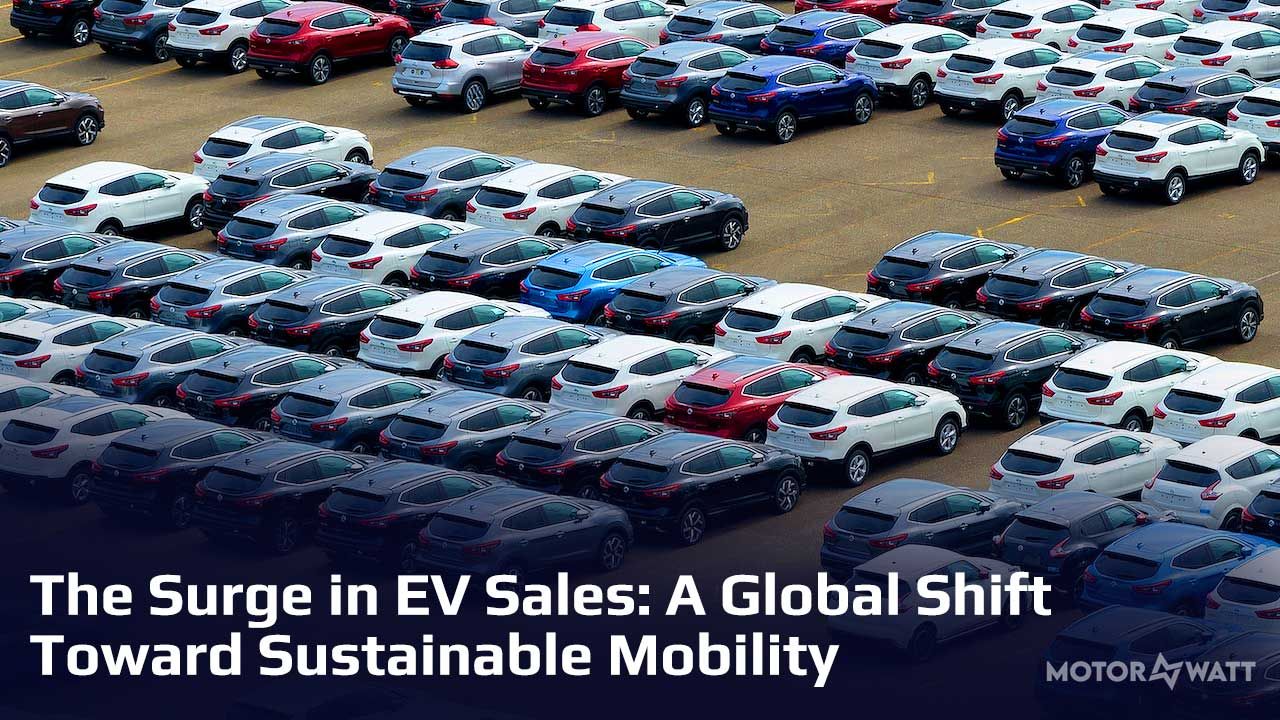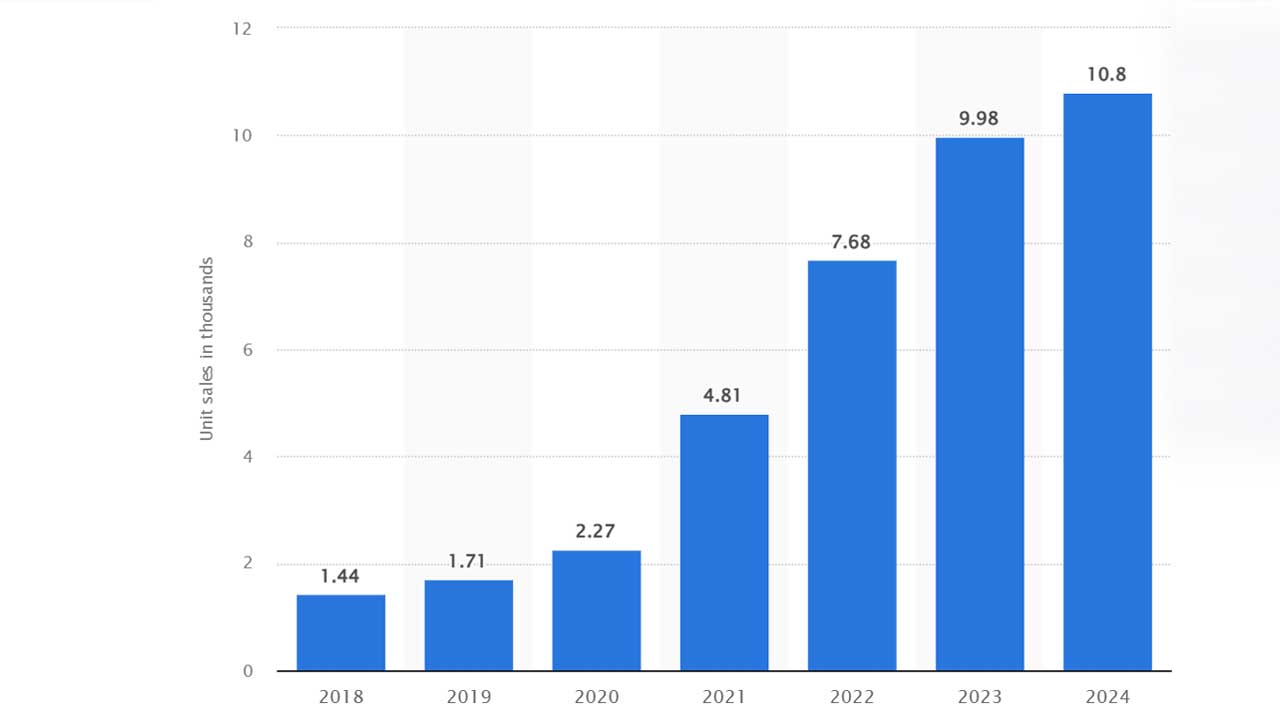The Surge in Electric Vehicle Sales: A Global Shift Toward Sustainable Mobility
Share this article in Social Media:

Electric vehicle sales refer to the total number of EVs sold globally or in specific regions over a given period. In 2025, they’re projected to make up more than 25% of all passenger car sales worldwide. That’s no small feat, considering EVs held just a fraction of the market a few years ago. The surge is fueled by cheaper battery tech, rising fuel costs, and a hard policy push from governments worldwide. China alone is set to hit a 50% EV sales share by year’s end. Meanwhile, emerging markets like India and Brazil are logging double-digit growth. Whether it’s your neighbor’s new BYD or a fleet of Scania buses in Europe, electric vehicle sales are shaking up how the world moves.
Why Electric Vehicle Sales Are Accelerating
EVs aren’t just trending—they’re expanding fast thanks to some real-world economics. Battery prices keep dropping, which drags overall EV costs down with them. In China, two-thirds of EVs in 2024 were cheaper than their gas-powered equivalents. Globally, EV sales jumped 35% year-on-year in Q1 2025, with over 20 million expected to move by year’s end. It’s not just price driving demand. Consumers care more about air quality and emissions, and governments are throwing fuel on the fire with subsidies, tax breaks, and ZEV mandates. For example, the EU wants 60% of all car sales to be electric by 2030. When you combine affordability, green tech, and strong policy support, you get a boom in electric vehicle sales.

Regional Trends: China, Europe, and Emerging Markets
Where are electric vehicle sales happening the fastest? China’s taking the crown. It represented nearly 60% of global EV sales in 2023 and is expected to cross the 50% domestic threshold in 2025. That’s partly due to dirt-cheap options from BYD, Geely, and other homegrown brands. In Europe, countries like Norway (93% EV share in 2023) are leading the charge, thanks to strict emissions rules and big-time perks for EV buyers. Southeast Asia and Latin America are heating up too—Thailand and Brazil doubled their sales in 2024. The U.S.? Still playing catch-up, expected to hit just 11% EV share in 2025, weighed down by political noise and uncertain federal incentives. But even in slower markets, low-cost imports and better infrastructure are starting to move the needle.
Battery Tech and Features Fueling the Surge
Technological progress is giving electric vehicle sales a serious tailwind. Lithium-ion batteries now store more juice in less space and weigh less than ever. That means EVs go farther on a single charge and recharge quicker—some models now hit 80% in under 30 minutes. Electric vans like the Hyundai Porter and Ford E-Transit can now deliver over 160 miles (260 km) on a charge—a 55% jump since 2015. Automakers are throwing in all the extras, too. Features like regenerative braking, advanced driver assistance (ADAS), and high-speed connectivity are now common. Tesla’s compact 2025 model and Scania’s long-range buses prove that EVs are no longer just green—they’re practical and well-equipped, too.
Barriers Holding Back Electric Vehicle Sales
Not everything’s smooth sailing. In the U.S., a potential repeal of tax credits could bump prices and scare off buyers. Charging infrastructure, especially outside urban hubs, remains a sticking point worldwide. Sure, global public chargers jumped 40% in 2023—but we’ll need six times more by 2035 to keep pace with projected EV growth. Then there’s the “SUV problem.” Most new EVs are large and pricey, while budget-friendly compact models are in short supply. Only 25% of the next wave of EVs will be small or midsize. And let’s not forget supply chain headaches—lithium, cobalt, and rare earth materials are getting harder (and more expensive) to secure, which could impact production timelines and pricing down the line.
Future Projections: Where Electric Vehicle Sales Are Headed
The outlook? Bright and getting brighter. EVs are forecasted to make up more than 40% of global car sales by 2030. The IEA says that by 2035, every other car sold will be electric. That shift alone could cut global oil demand by over 5 million barrels a day—about what the U.S. uses for road transport right now. Southeast Asia and Latin America are expected to combine for more than 500,000 EV sales in 2025, while battery recycling and used EV markets add another layer of growth. In China, 800,000 used EVs changed hands in 2023 alone. Solid-state batteries and V2G (vehicle-to-grid) tech could further embed EVs into our broader energy systems. Meanwhile, big automakers like Volkswagen, Toyota, and GM are gunning for multi-million EV targets. What was once niche is now mainstream—and fast becoming essential.
How Consumers Can Ride the EV Sales Wave
Looking to join the EV crowd? Start with research. Models from BYD, Hyundai, and Kia are offering serious bang for the buck, especially in the sub-$30,000 (€27,500) tier. Check for available tax credits or local rebates—they can shave thousands off the sticker. Think about where you’ll charge—home chargers are often more reliable and cost-effective. And don’t ignore the second-hand EV market; prices are dropping, and long-term maintenance savings are real. With fuel and upkeep costs significantly lower than ICE cars, EVs can pay for themselves over time. Pay attention to policy shifts and keep an eye out for next-gen models hitting showrooms—you might just find the perfect match at the right moment.
Conclusion
Electric vehicle sales are no longer a trend—they’re the new direction of the auto world. With over 25% of global car sales expected to be electric in 2025 and 40% by 2030, the writing’s on the wall. Whether you're shopping for your first EV or following the industry closely, this shift represents a monumental change in how we drive, spend, and think about mobility.










